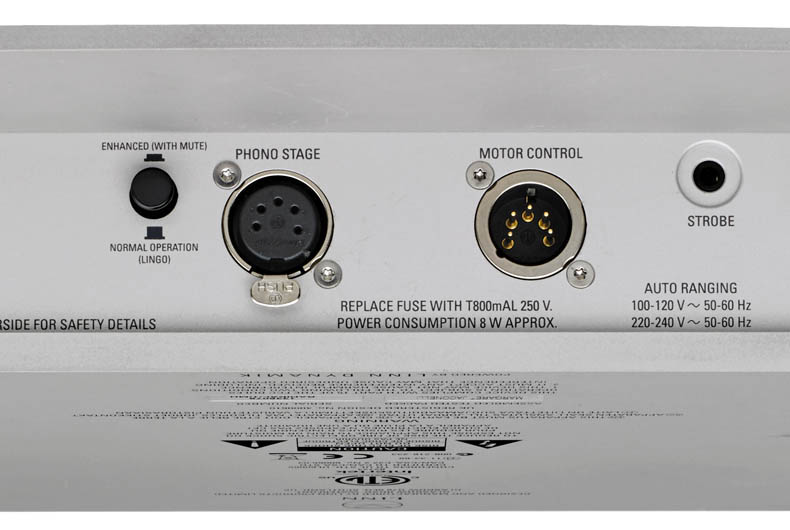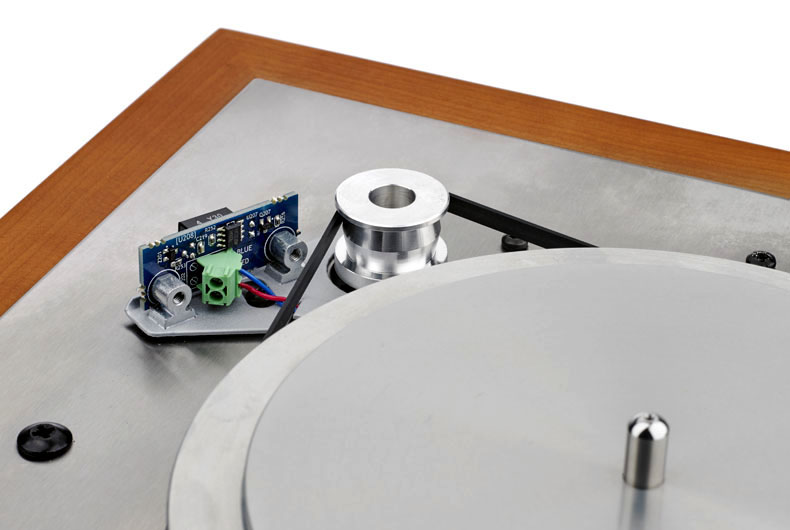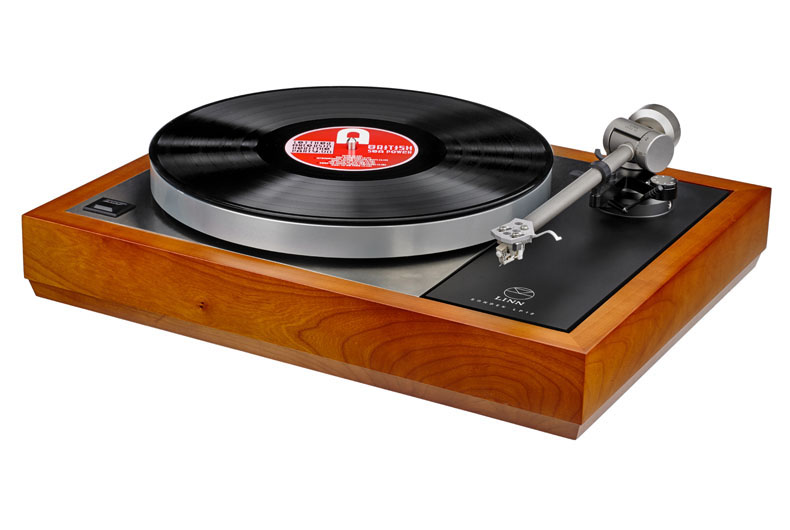What Hi-Fi? Verdict
Linn’s LP12 remains one of the finest turntables around. This Klimax version may be expensive but it is a massively capable and neatly configured deck
Pros
- +
An informative, dynamic and exciting presentation
- +
Sensational dynamics and surefooted with rhythms
- +
Excellent build and finish
Cons
- -
Hefty price
Why you can trust What Hi-Fi?
The Linn LP12 was introduced in 1973. This unassuming belt-driven turntable took a while to gain traction, but by the ’80s it had become the dominant premium record player on the market, in the UK at least.
Even today, it’s held in high esteem and still considered by many as one of the most capable decks around. That’s impressive staying power for a design that outwardly looks little different from the decades-old original.
Of course, despite appearances it has changed over that time. Almost totally. Just about every part has been developed and honed on multiple occasions. The good thing is that all the important improvements are retrofittable.
If you have one of the early decks it can easily be brought up to current standards. Easy, in this case, isn’t the same as cheap, as a quick rundown of our range-topping Klimax LP12 review sample shows.
MORE: The best turntables of the 21st century
Price breakdown

The basic deck (called Sondek LP12) – no arm or cartridge – comes in at below two grand, which is not so bad for a top-end turntable. It’s available in one of five standard plinth finishes: oak, cherry, black ash, rosenut and walnut.
This standard unit won’t even play 45rpm discs without an (included) adaptor, though. The Ekos SE tonearm and Kandid moving-coil cartridge combination add just over £7000 to that.
The latest hi-fi, home cinema and tech news, reviews, buying advice and deals, direct to your inbox.
By the time you factor an Urika phono stage, Radikal power supply and Keel sub-chassis into the equation the price more than doubles, reaching the figure we’ve quoted.
It’s easy to wonder if Linn has been a little too ambitious with the pricing of these optional parts.
MORE: The making of: Linn Sondek LP12
Build and design

Such thoughts start to fade once we start taking a careful look. Every part of the Klimax LP12 has the aura of carefully honed engineering coupled to fit and finish of the highest level.
There’s the unmistakable feel of a product that will carry on working for years to come and, given Linn’s track record, continue to be improved when technology allows.
The Ekos SE arm is a great example. It’s a design that can trace its heritage back to the classic Ittok tonearm that was introduced in the late ’70s, yet it still feels thoroughly modern and wholly competitive.
It’s lovely to use, with impressively precise and smooth bearings giving it a feeling of real quality. The arm tube is made of titanium while the main bearing housing uses stainless steel. And it’s all beautifully made.
The partnering Kandid moving-coil cartridge is equally commendable. It’s an exposed design, which means it doesn’t have a housing that covers the internals; this is done to help prevent any structural resonances from spoiling the sound.
The body is an intricately machined piece of 7075 aluminium onto which the hand-wound coil-and-magnet assembly is mounted. The cartridge uses a ceramic Boron cantilever with a nude micro-ridge diamond tip.
MORE: Best record players

Protective stylus guards aren’t something we tend to mention but in this case we’ll make an exception.
The one for the Kandid is brilliantly designed, having a tongue that fits into a gap between the front two cartridge-mounting bolts and lines everything up so there’s no danger of damaging the fragile cantilever when using it.
The signal from a cartridge is tiny – in the case of this moving-coil example, just 0.4mV (as a comparison, CD is 2V) – so it makes sense to keep the signal path as short as possible to minimise any degradation of the signal.
Linn has done just that by mounting the Urika phono stage inside the plinth of the deck. It’s a dual-mono electronic circuit to help stereo imaging and is mounted directly on the LP12’s Trampolin baseboard for improved isolation.
The phono stage needs power and the Radikal outboard unit supplies this.
MORE: How a turntable is made

The Radikal isn’t just a power supply for the Urika; the unit also comes with a DC motor to replace the AC unit fitted to the LP12 as standard. Linn claims the move to a DC motor reduces noise, so helping performance.
Speed change is electronic and done by a single press of the button positioned on the front left of the plinth, bypassing the need for the adaptor of the basic LP12 when switching from 33 1/3 to 45rpm.
The LP12 is isolated from its surroundings by a spring-based suspension system. Check the suspension bounce on a well-adjusted example and you’ll find it to move in a smooth and controlled way.
Hidden inside the plinth is the Keel; a one-piece aluminium sub-chassis that is machined to include the arm board and tonearm collar. By integrating all these parts into a single piece Linn has reduced resonances and improved precision.
It’s a wonderful piece of engineering, but even we baulk at the £2660 price tag.
Installation

Connecting the Klimax LP12 to our reference system is simple. There are two leads that go between the LP12 and Radikal power supply – one for the phono stage and the other for the DC motor.
The output signal is already at line level – thanks to the phono stage – so it can be treated as any conventional line-level source. Plug in mains power into the Radikal and off you go.
Despite the built-in suspension the Klimax LP12, like any turntable, benefits from a stable and low-resonance support. The further away from the speakers you can get, the better.
To truly appreciate the deck the rest of the system needs to be top-class too. We used our usual reference Gamut D3i/D200i amplification with ATC’s SCM50 speakers.
MORE: How to set up a turntable
Sound

We have to admit we feared for this Klimax LP12. While no strangers to the basic deck’s many talents, this range-topper’s price tag puts it up against some stellar competition in the form of Clearaudio’s Innovation Wood. It doesn’t take too long to realise we needn’t have worried.
Once everything has had a chance to settle, the Klimax LP12 package is a fabulous performer. Early LP12s had a bit of a bloom at lower frequencies that gave them a rich, fluid and highly musical character.
Over the years Linn’s developments have steadily moved the deck into becoming a more neutral performer. Detail resolution, agility and transparency have improved notably with each new step, but we know some still prefer the way things used to be.
The Klimax LP12 is still a wonderfully musical deck, though. Listen to Michael Jackson’s Bad set and it charges through Smooth Criminal with enthusiasm. There’s just so much detail; every instrumental strand is brushed up for inspection yet it all still comes together as a cohesive and engaging whole.
And it’s great fun too. LP12s have always been known for their ability to convey rhythms well and this range-topper is no different. It delivers this track with real punch and precision while losing nothing in composure as the music builds to its climax.

Moving on to Nick Cave and the Bad Seed’s The Boatman’s Call and the Linn continues to impress. Cave’s vocals are rendered with texture and nuance while the deck’s terrific way with low-level dynamics shines throughout.
Piano notes sound solid and harmonically coherent while the steady flow of tracks such as Into My Arms is delivered with great skill.
Compared with a similarly priced Clearaudio Innovation Wood/Luxman EQ-500 turntable/phono stage combination there’s a lack of natural warmth and spaciousness – the Linn preferring a more forward and direct presentation – but, if anything, the LP12 renders the sound with more precision and agility. Both are excellent, leaving the choice down to the sonic flavour you prefer.
We try Beethoven’s Fifth Symphony next and the Klimax is right at home. It delivers a sound of huge scale and power, punching out the music’s demanding crescendos with passion.
Yet, despite all the sonic fireworks there’s still space for fluid dynamics and low-level subtleties that turn the listening experience into a real thrill.
MORE: How to build the perfect hi-fi system

The soundstaging is good too. The package’s upfront presentation means there’s not the same emphasis on image depth that we hear from rival combinations but the Linn still delivers a huge, well proportioned soundstage with precision and skill. Instruments remain locked in place even when the piece becomes demanding.
Tonally things are a little lean in our system, but not so much that the Klimax could be accused of sounding thin or insubstantial, though.
Importantly, there’s an evenness to the presentation that means we’re not distracted by peaks or troughs in any particular part of the frequency range.
The upside of such a sound is a sense of immediacy and agility that most rivals would struggle to better.
MORE: How to get the best sound from your turntable
Verdict
There’s no denying that the range-topping LP12 is a mighty expensive thing. It also doesn’t help that it looks little different from decks made decades ago.
Yet, in most respects it’s startlingly better than what has gone before and is still right up there with the very best at this price.
The Linn LP12 remains a deck to be taken very seriously indeed.
See all our Linn reviews
What Hi-Fi?, founded in 1976, is the world's leading independent guide to buying and owning hi-fi and home entertainment products. Our comprehensive tests help you buy the very best for your money, with our advice sections giving you step-by-step information on how to get even more from your music and movies. Everything is tested by our dedicated team of in-house reviewers in our custom-built test rooms in London, Reading and Bath. Our coveted five-star rating and Awards are recognised all over the world as the ultimate seal of approval, so you can buy with absolute confidence.


